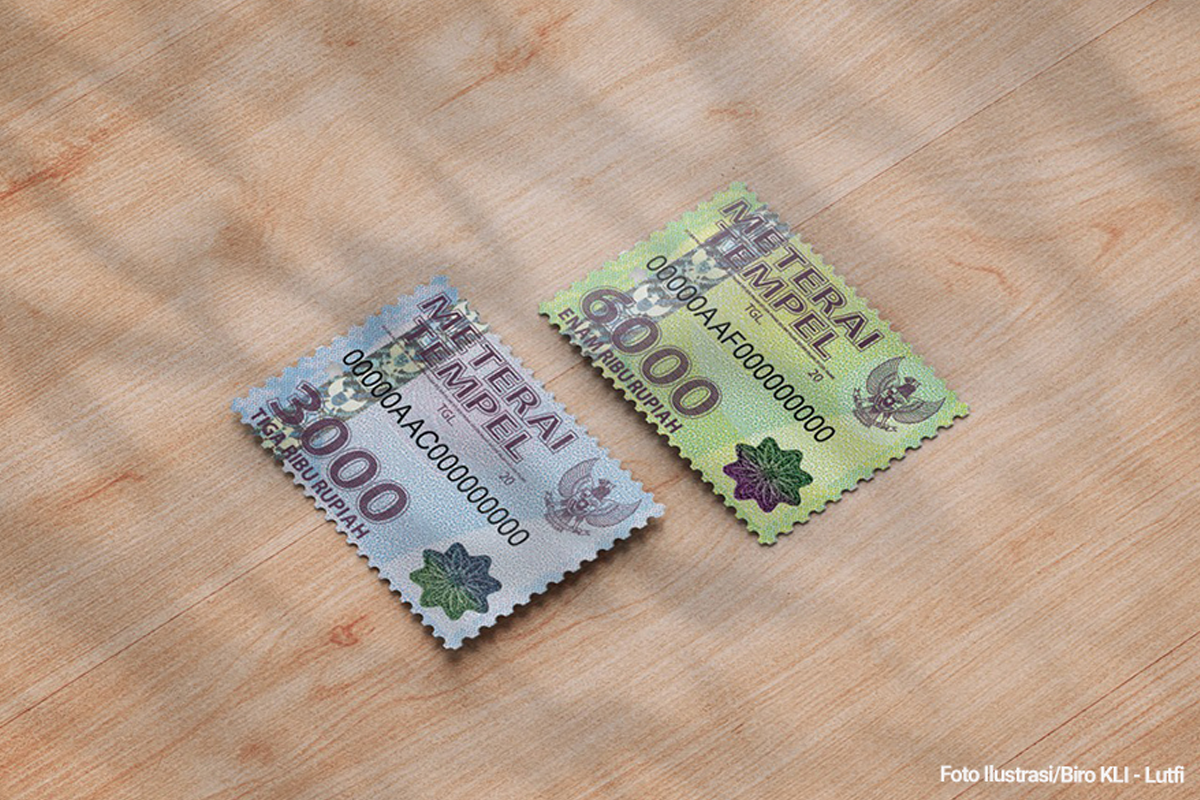Hanya Wajib Pajak Tertentu Berhak Pungut Bea Meterai, Ini Kriterianya!

Pemerintah menegaskan, hanya wajib pajak tertentu yang boleh memungut, menyetor dan melaporkan pembayaran bea meterai atau pajak atas dokumen terutang.
Wajib pajak tersebut harus memenuhi kriteria yang ditetapkan pemerintah dalam Peraturan Menteri Keuangan (PMK) Nomor 151/PMK.03/2021 yang terbit dan mulai berlaku pada 27 Oktober 2021.
Ada dua kriteria yang ditetapkan di dalam beleid tersebut. Pertama, wajib pajak yang memfasilitasi penerbitan surat berharga seperti cek dan bilyet giro.
Kedua, wajib pajak yang menerbitkan atau yang memfasilitasi penerbitan dokumen transaksi surat berharga termasuk kontrak berjangka, surat keterangan, surat pernyataan dan sejenisnya, serta dokumen yang menyatakan nilai nominal di atas Rp 5 juta yang jumlahnya lebih dari 1.000 dokumen per bulan.
Baca Juga: UU Bea Meterai Baru Dirilis, Ini Rinciannya
Mekanisme Penetapan
Setiap wajib pajak yang memenuhi kriteria akan ditetapkan sebagai pemungut bea meterai oleh pejabat yang ditunjuk Direktur Jenderal Pajak.
Apabila ada wajib pajak yang memenuhi kriteria tetapi belum ditetapkan, dapat menyampaikan pemberitahuan melalui email, aplikasi atau sistem yang disediakan DJP, untuk ditetapkan sebagai pemungut bea meterai.
Namun demikian, ketika wajib pajak tidak lagi memenuhi kriteria sebagai pemungut bea meterai selama tiga bulan berturut-turut, DJP akan mencabut penetapan tersebut.
Cara Memungut Bea meterai
Pemungutan bea meterai terutang dilakukan dengan cara membubuhkan meterai cetak atau meterai elektronik (e-meterai) pada dokumen.
Sementara mekanisme pemungutan dilakukan tergantung jenis dokumen yang terutang bea meterai.
Untuk dokumen yang berupa surat berharga seperti cek dan bilyet giro, pemungutan dilakukan saat dokumen diterima dari pembuat meterai.
Kemudian untuk dokumen berupa surat berharga kontrak berjangka, pemungutan dilakukan saat dokumen selesai dibuat oleh penerbit atau fasilitator penerbitan dokumen.
Jika dokumen berupa surat keterangan, surat pernyataan, atau sejenisnya dan dokumen yang menyatakan jumlah nominal di atas Rp 5 juta, pemungutan dilakukan saat dokumen diserahkan kepada pihak yang terutang bea meterai.
Pemungutan e-meterai
Sementara untuk pemungutan meterai elektronik atau e-meterai, wajib pajak yang telah ditunjuk bisa meminta e-meterai dari distributor untuk kemudian dibubuhkan pada dokumen.
Adapun yang dimaksud dengan distributor yaitu badan usaha yang memiliki kualifikasi untuk mendistribusikan atau menjual e-meterai melalui sistem aplikasi.
Permintaan e-meterai ke pada distributor dapat dilakukan wajib pajak sesuai kebutuhan pada satu masa pajak. Sebelum mengajukan permintaan e-meterai untuk masa pajak berikutnya, wajib pajak harus menyetorkan bea meterai terutang di masa pajak sebelumnya.
Baca Juga: Aturan Terkait Penggunaan Materai Elektronik Dirilis
Penyetoran Bea Meterai
Setelah dipungut, bea meterai harus disetorkan oleh wajib pajak yang telah ditunjuk paling lambat tanggal 10 pada bulan berikutnya setelah masa pajak berakhir.
Penyetoran dapat dilakukan menggunakan formulir Surat Setoran Pajak (SSP) atau sarana administrasi lain yang dipersamakan dengan SSP.
Selain itu, bisa juga dilakukan menggunakan kode billing dengan kode akun pajak 411611, dengan kode setoran 900 untuk meterai cetak dan 901 penggunaan meterai cetak karena tidak bisa menggunakan e-meterai.
Sedangkan untuk penggunaan e-meterai dapat menggunakan kode setoran 902, dengan mencantumkan Nomor Pokok Wajib Pajak distributor e-meterai di kolom keterangan.
Pelaporan Pungutan Bea Meterai
Selain memungut dan menyetor, wajib pajak yang ditunjuk sebagai pemungut juga harus melaporkan Surat Pemberitahuan (SPT) masa bea meterai kepada DJP.
Atas pemungutan bea meterai tempel, SPT masa bea meterai tersebut disampaikan secara langsung ke kantor DJP maksimal tanggal 20 bulan berikutnya setelah masa pajak berakhir.
Sementara atas pemungutan e-meterai SPT Masa disampaikan melalui aplikasi atau sistem yang disediakan DJP.
Jika dalam pengisian SPT masa bea meterai ada kesalahan, seperti salah tulis atau salah hitung, wajib pajak dapat melakukan pembetulan.
Sementara jika bea meterai yang disetor terdapat kelebihan, wajib pajak bisa mengajukan pemindah bukuan atau pengembalian kelebihan pembayaran pajak atau restitusi.
Sebagai catatan, meskipun dalam satu masa pajak tidak ada bea meterai yang dipungut, wajib pajak tetap wajib membuat SPT masa bea meterai.


